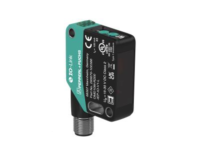
Chirp Microsystems, the pioneer in low-power ultrasonic sensing, today launched the world’s smallest, lowest-power ultrasonic time-of-flight (ToF) sensors, the CH-101 and CH-201.
Commonly recognized as the best range-sensors for automotive and industrial applications — as well as for drones and robotics — ultrasonic ToF sensors offer numerous advantages. They deliver the most accurate range measurement regardless of target size or color and are immune to ambient noise. Unlike optical ToF sensors, they work in direct sunlight. Unlike earlier ultrasonic sensors, Chirp’s ultrasonic sensors are also small and low-power enough for space-constrained consumer applications such as smartphones.
“Ultrasonic sensors are widely used in industrial and automotive applications because they are robust, accurate and reliable,” said Michelle Kiang, CEO, Chirp Microsystems. “Until today, ultrasonic sensors were too big and ugly to fit into consumer electronics. At Chirp, we invented a tiny, millimeter-sized ultrasound chip that can deliver the same performance as conventional sensors that are one thousand times bigger. As we reduced the size, we were also able to dramatically reduce the power consumption – to the point where you can run the sensor at a few micro-amps of current. This combination of small size, ultra-low power and ease-of-use opens ultrasonic sensing to a wide variety of products for the first time.”

Product designers are adopting Chirp’s sensors in products such as drones and robots where other range sensors cannot produce the required performance. Chirp’s sensors are also ideal for smart home products such as smart speakers, where alternative sensing technologies, such as passive infrared (PIR) and optical proximity sensors, are not as effective. In virtual reality and augmented reality (VR/AR) systems, Chirp’s ultrasonic sensors provide accurate tracking of hand-held gaming controllers and other accessories.

Smartphones comprise another important target market. “The CH-101 allows product designers to remove the optical proximity sensor from the front of the phone to create a bezel-less display,” continued Kiang. “That’s because the CH-101’s wide field-of-view allows it to measure range even when it is mounted on the top or bottom sides of the phone. Since this is the location of the microphone and speakers, it’s easy for designers to add another acoustic sensor at these locations.”
Designers, who have previously been forced to choose between bulk ultrasonic transducers and laser-based infrared (IR) ToF sensors for range-finding and object-detection, now can take advantage of the Chirp sensors’ ability to:
- Provide precise, low-latency range measurements at sample rates up to 100 samples per second with position noise below 1 mm
- Enable always-on sensing applications such as human presence, motion and activity sensing at power levels as low as 15 microwatts
- Detect objects over a field-of-view up to 180° — enabling a single sensor to support room-scale sensing
- Work perfectly in all lighting conditions — unlike IR sensors, which do not work in direct sunlight
- Detect objects of any color, including optically transparent ones — enhancing object detection
- Ensure eye-safety — contrasting with laser-based IR sensors
For more information Visit: www.chirpmicro.com



















